Understanding Low Mintage Coins: A Guide to Reading Coin Details and Grading
I’ve been chasing the thrill of coin collecting for over two decades, and every coin I hold feels like a portal to history, with a dozen unique stories behind them. From the weight of a gold American Eagle in my...

I’ve been chasing the thrill of coin collecting for over two decades, and every coin I hold feels like a portal to history, with a dozen unique stories behind them. From the weight of a gold American Eagle in my hand to the faint luster of a worn 19th-century large cent, each piece tells a story. But to truly understand a coin—its value, its rarity, its condition—you need to know how to read it. This means decoding its obverse, reverse, and edge, grasping its specifications like karat and fineness, and mastering the art of grading. Whether you’re a beginner or a seasoned numismatist, this guide will walk you through the essentials, drawn from my own journey in the world of coins.
Introduction to Coin Collecting

Coin collecting, or numismatics, is more than a hobby—it’s a passion that blends history, art, and economics. I started as a kid, fishing wheat pennies from my dad’s change jar, and soon I was hooked on the diversity of coins, from United States classics to world coins like the Canadian Maple Leaf. Numismatics invites you to explore coins of all kinds: circulating currency, low-mintage commemorative issues, and precious metal bullion made of gold, silver, or platinum.
Understanding a coin’s value and condition is at the heart of collecting. Early on, I learned that two coins of the same type could differ wildly in worth based on their grade—a measure of their condition and rarity. The history of coin collecting stretches back to the 1850s, when famous enthusiasts began formalizing the hobby. The Sheldon scale, introduced by William Sheldon in 1949, revolutionized how we evaluate coins, assigning a numerical grade from 1 to 70 to reflect quality. This system is still the gold standard today. Coin collecting and the significance of coins have evolved over centuries, with each era reflecting changes in culture, technology, and society.
Today’s collectors have endless options: mint state coins fresh from the press, proof coins with mirror-like finishes, or uncirculated coins that have never seen a pocket. Coin shows are my favorite way to dive deeper—vibrant gatherings where collectors buy, sell, and trade while sharing knowledge about grading and values. Online communities and local clubs offer similar camaraderie. Whether you’re drawn to the shine of a silver Morgan dollar or the heft of a gold Krugerrand, numismatics is a journey of discovery.
Coin Anatomy and Details

To read a coin, you need to know its anatomy as a group: the obverse, reverse, edge, and mint mark. These elements are the building blocks of identification and evaluation. When I examine a coin, I feel like a detective, piecing together clues about its origin and story.
-
The obverse often features inscriptions such as the country, denomination, and most importantly, the year the coin was issued. The dates when coins are issued can be critical for collectors, as certain years may have low mintage or historical significance. Some dates of issue are especially sought after due to their rarity or the limited number of coins that have survived, making them highly desirable among collectors.
Obverse: The Face of the Coin
The obverse, or “heads,” is the front of the coin, often featuring a portrait of a king r national symbol. On a U.S. Kennedy half dollar, it’s John F. Kennedy’s profile; on a Canadian Maple Leaf, it’s Queen Elizabeth II. I always start here, as the obverse sets the coin’s identity. Look for:
-
Design: The central image, like Lady Liberty on the American Gold Eagle, reflects the issuing country’s values.
-
Inscriptions: These include the denomination (e.g., “$1”), year of issue, and mottos like “E PLURIBUS UNUM.” The date is a quick clue to rarity—my 1909-S VDB Lincoln cent, for example, is prized for its low mintage.
-
Mint Mark: A small letter (e.g., “P” for Philadelphia, “S” for San Francisco) shows where the coin was minted. I once spotted a 1922-D Lincoln cent in a dealer’s case, a key date that jumped in value because of its mint mark.
Reverse: The Backstory
The reverse, or “tails,” is the back, often showcasing intricate designs, such as a bison. The American Silver Eagle’s heraldic eagle or the Australian Kookaburra’s rotating wildlife designs are stunning examples. The reverse is where I lose myself in a coin’s artistry. Check for:
-
Design: This might commemorate an event (e.g., the 1986 Statue of Liberty commemorative) or feature a national icon, like the springbok on a South African Krugerrand.
-
Inscriptions: These often list specifications, like “1 OZ FINE GOLD” on a Gold Buffalo, or the country of origin. For bullion, these details confirm purity and weight.
-
Designer’s Initials: Tiny letters near the design credit the artist. I once traced a rare 1916 Standing Liberty quarter to its designer, Hermon MacNeil, which added to its allure.
Edge: The Overlooked Detail
The edge is the coin’s outer rim, and it’s easy to miss—but it can make or break a coin’s value, so take note of its condition. I learned this when I found a 1965 Kennedy half dollar with a smooth edge, a rare error that set it apart from its reeded counterparts. Examine the edge for:
-
Reeding: Grooved edges, like on a U.S. quarter, were historically used to prevent tampering. Today, they’re often decorative.
-
Plain Edge: Smooth edges appear on some older coins or errors. My 1937 Buffalo nickel with a plain edge turned out to be a minting mistake worth hundreds.
-
Lettered Edge: Coins like the U.S. Presidential dollars have inscriptions like “IN GOD WE TRUST” on the edge. Tilt the coin under light to read them.
-
Security Features: Modern bullion coins, like the Austrian Philharmonic, may have unique edge patterns to deter counterfeits.
Mint Mark and Other Details
The mint mark is a tiny but critical detail, often found on the obverse or reverse. Coins from mints like West Point (“W”) or San Francisco (“S”) can carry a premium due to lower production, especially if they were created in limited runs. I also look for details like “full bands” on a Mercury dime (sharp horizontal lines on the reverse fasces), which indicate a strong strike, or “weak strike” areas where the design is faint. Contact marks—small dings from handling—can lower a coin’s grade, so I use a 10x magnifying loupe to spot them. A good light source and a steady hand are your best tools here.
Mintage and Rarity

One of the most exciting aspects of coin collecting is the hunt for low-mintage coins. Mintage refers to the number of coins produced for a particular design, date, or series, and it’s a key factor in determining a coin’s rarity. As a collector, I’m always on the lookout for coins with the lowest mintage—those elusive pieces that were struck in limited numbers and are now tough to find. These coins often become the crown jewels of a collection, not just because of their scarcity, but because of the stories behind their creation.
For example, the 1933 Double Eagle gold coin is legendary among collectors, with a mintage of just 445,500 pieces—yet only a handful are known to exist today, making it one of the rarest and most valuable coins in the world. When a coin has a low mintage, it means fewer pieces are available for collectors, driving up demand and value. I always pay close attention to mintage numbers when researching a new series or deciding which coins to add to my collection. The thrill of finding a coin with the lowest mintage in a set is hard to beat, and it’s a big reason why so many collectors are drawn to the hobby. Whether you’re after a gold coin with a tiny production run or a modern commemorative with just a few thousand made, understanding mintage is essential for making smart collecting decisions.
Understanding Coin Grading

Grading is the art and science of assessing a coin’s condition, and it’s a skill that transformed my collecting, which was an idea I had early on. A coin’s grade determines its value, often by thousands of dollars. The Sheldon scale, ranging from 1 (heavily worn) to 70 (perfect), is the backbone of grading. For example, a Morgan dollar graded MS-65 (mint state, gem quality) might fetch $200, while the same coin in VF-20 (very fine, worn) could be worth $30.
Professional grading services like PCGS (Professional Coin Grading Service) and NGC (Numismatic Guaranty Corporation) combine numerical grades with terms like, on any given day :
-
Extremely Fine (EF or XF): Light wear on high points, details sharp.
-
Gem Uncirculated (MS-65): No wear, strong luster, minor marks.
-
Brilliant Uncirculated (BU): A non-technical term for shiny, uncirculated coins.
Certain features or grades, such as exceptional toning, prooflike surfaces, or rare varieties, are specifically noted on grading certificates or slabs by these services, which can add to a coin's desirability and value.
When I started, I graded coins myself, but I soon realized the value of third-party grading. PCGS slabs (sealed plastic holders) give me confidence in a coin’s authenticity and grade. However, grading isn’t just about numbers—it’s about understanding wear, eye appeal, and the quality of details I’ve discovered. For instance, a coin with “bag marks” (scratches from mint bags) might grade lower despite being uncirculated.
Pitfalls like improper storage can hurt a coin’s grade, particularly if it causes a bust in quality. I once bought a silver dollar that had been stored in a PVC holder, leaving a green residue that slashed its value. Artificial re-toning (chemically altering a coin’s color) or excessive toning (natural discoloration) can also lower grades. Learning these nuances took time, but it’s made me a sharper collector.
Coin Authentication

Authenticating coins is a crucial step for any serious collector. With so many counterfeits and altered coins circulating in the market, it’s important to know how to verify that a coin is genuine. I always start by examining the coin’s details—its date, mint mark, and design—comparing them to trusted references like the Red Book. This comprehensive guide is a staple in my home, and I use it to check everything from the correct font on a coin’s inscriptions to the placement of the mint mark.
Collectors and dealers often use a combination of visual inspection and specialized tools to authenticate coins. I look for signs of tampering, such as unusual surface textures or mismatched details, and I always check the coin’s weight and diameter against official mint specifications. Sometimes, I’ll use a magnifying glass or even a microscope to spot tiny inconsistencies that could indicate a fake. For high-value coins, I recommend seeking a second opinion from a reputable dealer or submitting the coin to a professional grading service. Authenticating coins not only protects your investment but also deepens your appreciation for the artistry and history behind each piece.
Factors Affecting Coin Values
A coin’s value hinges on more than its grade. Rarity, condition, demand, and mintage all play a role. Here’s what I’ve learned about what drives a coin’s worth:
-
Rarity: Low-mintage coins, like the 1916-D Mercury dime, are prized. I once tracked down a 1932-D Washington quarter, one of the rarest in the series, and its scarcity drove its price to $500 in fine condition.
-
Condition: Higher grades mean higher values. A mint state 1889-CC Morgan dollar can sell for $100,000, while a worn example might fetch $500.
-
Demand: Market trends matter. World War II-era coins, like the 1943 steel cent, are hot due to their historical appeal. I’ve seen collectors pay premiums for these at shows. Some low-mintage coins quickly go out of stock at dealers, which can increase their value and create urgency among collectors.
-
Metal Content: For bullion coins, value tracks the spot price of gold or silver. A 1 oz Gold Eagle, with 1 troy ounce of 22-karat (.9167 fine) gold, fluctuates with the market, often exceeding $2,000 in 2025.
-
Eye Appeal and Strike: A well-struck coin with vibrant luster or attractive toning (natural patina) can command a premium. I once sold a rainbow-toned Morgan dollar for double its book value because of its stunning colors.
Flaws hurt value. Minor softness (weakly struck details), environmental damage (corrosion), or prominent scratches can tank a coin’s worth. Conversely, exceptional eye appeal—like a sharply struck 1969-S Kennedy half dollar, or an unc coin —can boost it. Staying informed about market trends, via resources like Coin World or auction results, helps me spot undervalued coins. Collectors often share their discoveries and insights about rare coins in online forums or at shows, helping others spot opportunities.
Rare and Unique Coins
There’s something truly special about holding a rare or unique coin in your hand. These coins stand out not just for their low mintage, but for their remarkable stories and features. Some of the most coveted coins in the world are those with errors—like a misprinted date, a double strike, or a design that was quickly changed by the mint. I’ve always been fascinated by error coins, as they offer a glimpse into the unpredictable side of coin production.
Take the 1913 Liberty Head nickel, for example—a coin with a unique design and an incredibly low mintage, making it one of the most famous rarities in the world. Or the 1804 Draped Bust dollar, a coin that’s legendary among collectors for its rarity and the mystery surrounding its creation. Gold coins like the 1933 Double Eagle also capture the imagination, combining low mintage with historical intrigue. When I come across a coin with an unusual design, a rare date, or a well-documented error, I know I’ve found something that will be the highlight of my collection. These rare and unique coins are more than just collectibles—they’re pieces of history that connect us to the world’s great stories and discoveries.
Advanced Coin Evaluation

For serious collectors, evaluation goes beyond the basics. Advanced techniques involve dissecting a coin’s strike quality, luster, and surface condition. I use a 10x loupe and a halogen lamp to inspect details like:
-
Strike Quality: A strong strike shows crisp details, like full feathers on an eagle. Weak strikes, often from worn dies, look mushy.
-
Luster: Mint state coins should glow with original mint luster, a frosty or satiny sheen. Dipped coins (chemically cleaned) lose this, hurting value.
-
Surface Condition: Look for minuscule imperfections, like hairline scratches, or applied substances, like wax, that mask flaws.
Notably, some coins feature famous men from history or mythology—such as coins depicting Alexander the Great or the part man, part god Hercules—which can add significant appeal and value for collectors.
Understanding the minting process deepens your evaluation. Metal movement (how molten metal fills a die) affects strike quality, while die wear can cause weak details. I once identified a 1955 doubled-die Lincoln cent by its distinct doubled lettering, a result of a misaligned die that every mother should teach their kids about. Tools like coin albums help me organize and compare coins, while a digital scale confirms weights (e.g., 31.1035 grams for a 1 oz troy coin).
Flaws to watch for include prominent flaws (large scratches) or artificial enhancements (polished surfaces). By studying minting errors and varieties, like the 1972 Type 2 Eisenhower dollar, I’ve snagged undervalued coins at auctions. Practice and patience are key—every coin you evaluate sharpens your eye.
Coin Appraisal

Getting a coin appraised is an essential step for anyone looking to understand the true value of their collection. Coin appraisal is more than just a quick glance at a price guide—it’s a careful evaluation based on the coin’s condition, rarity, and demand among collectors. When I have a coin appraised, I want to know not just its grade, but also its mint state and provenance. Coins that are in mint state, meaning they look just as they did when they left the mint, are especially prized. If a coin has a famous previous owner or a well-documented history, that provenance can add significant value.
Professional appraisers use tools like magnifying glasses and coin scales to examine every detail, from the sharpness of the design to the presence of any flaws. I always recommend using trusted resources like the Red Book to get a sense of current market values, but nothing beats the expertise of a seasoned appraiser who can spot subtle differences that affect a coin’s worth. Whether you’re thinking of selling, insuring, or just learning more about your coins, a thorough appraisal based on condition, rarity, and collector demand is the best way to ensure you know exactly what you have.
Storing and Preserving Coins
Preserving coins is as important as evaluating them. Improper storage can ruin a collection, as I learned when a silver Morgan dollar developed black spots from a damp storage box, which was never intended. Proper storage maintains condition and value, and I’ve adopted these best practices:
-
Coin Albums and Holders: Use archival-quality albums, 2x2 cardboard holders, or plastic slabs to protect coins from scratches and corrosion. I prefer Dansco albums for their durability.
-
Non-PVC Materials: PVC holders can release chemicals that damage coins. I switched to Mylar or polyethylene holders years ago.
-
Handling: Always wear cotton gloves to avoid oil and dirt from fingers. I hold coins by the edge, never touching the obverse or reverse.
-
Environment: Store coins in a cool, dry place to prevent excessive toning or environmental damage. A safe deposit box or a home safe with silica gel packets works well.
Risks like artificial re-toning (chemically induced color) or excessive toning from humidity can devalue coins. I check my collection regularly for signs of deterioration, like tarnish on silver. By investing in quality storage and handling with care, I’ve kept my coins pristine, and I always request advice from fellow collectors about preservation.
Key Specifications: Karat, Fineness, and Troy Ounces

For bullion coins, specifications are critical. These details, often inscribed on the reverse, confirm a coin’s metal content and mintages for authenticity:
-
Karat: Gold purity on a 24-part scale. A 24-karat coin (e.g., Canadian Maple Leaf) is 99.99% pure, while 22-karat (e.g., American Gold Eagle) is 91.67% gold, alloyed for strength. I prefer 24-karat for purity but admire the warm hue of 22-karat coins.
-
Fineness: Purity as a decimal (e.g., .9999 for 99.99% pure gold). The Australian Kangaroo boasts .9999 fineness, a hallmark of quality.
-
Troy Ounces: Bullion is measured in troy ounces (31.1035 grams). A 1 oz Silver Eagle contains 1 troy ounce of .999 fine silver. I use a digital scale to verify weights.
-
Diameter and Thickness: These help identify coins. A 1 oz Gold Maple Leaf is 30 mm wide and 2.8 mm thick. A caliper ensures accuracy.
-
Denomination: Symbolic for bullion, like $50 on a Gold Eagle. The metal’s market value dwarfs the face value.
I always cross-check specs with mint documentation or guides like the Red Book. For authenticity, I use a magnet test (precious metals aren’t magnetic) or a ping test (genuine coins ring distinctly). These steps ensure I’m buying the real deal.
Putting It All Together
Reading a coin is a skill that blends observation, knowledge, and practice. Start with the obverse to identify its origin, flip to the reverse for its story, and inspect the edge for hidden details. Study the mint mark and specifications to confirm authenticity and value. Master grading to assess condition, and stay mindful of factors like rarity and demand that drive worth. For advanced evaluation, hone your eye for strike, luster, and flaws, and always store coins properly to preserve their beauty.
Many collectors have heard stories about legendary low-mintage coins, but learning to read coins helps separate fact from fiction. In the end, mastering these skills will help collectors appreciate coins even more.
Related Articles
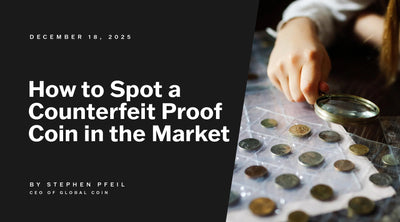
How to Spot a Counterfeit Proof Coin in the Market
How to Spot a Counterfeit Proof Coin in the Market In the world of numismatics, few things hold ...
Discover More
BREAKING NUMISMATIC NEWS: Large batch of 2025 Marine Privy Coins MELTED by U.S. Mint
BREAKING NUMISMATIC NEWS: Large batch of 2025 Marine Privy Coins MELTED by U.S. Mint A historic ...
Discover More
Tax Implications When You Sell Gold Bullion in Different States
Disclaimer: The following content is for informational purposes only and should not be construed ...
Discover More

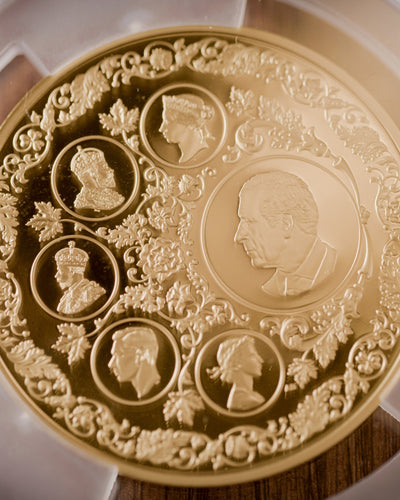
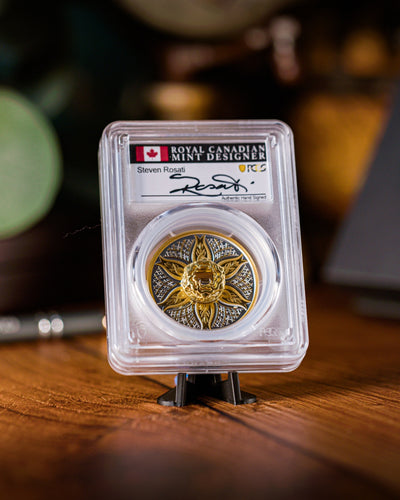
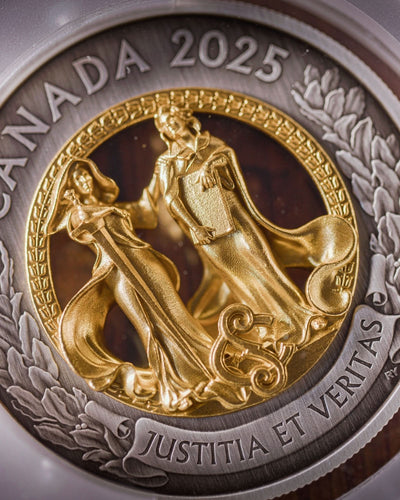
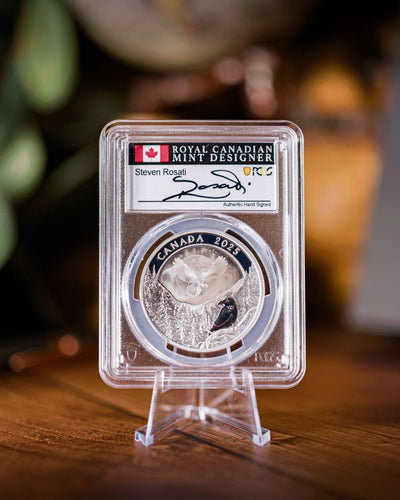
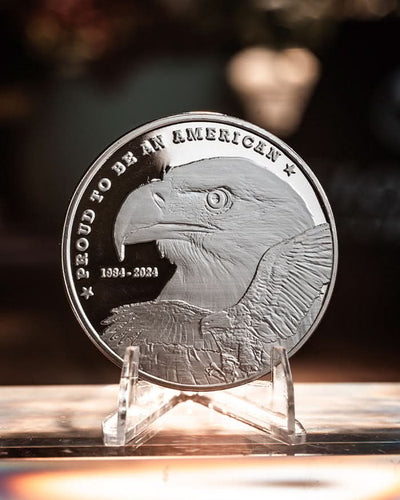
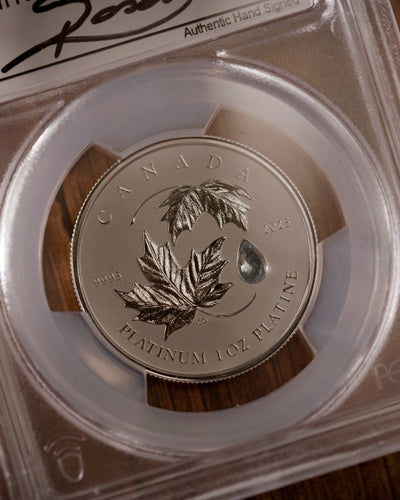
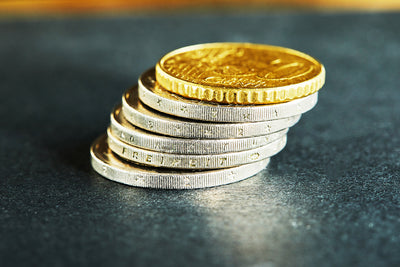
Leave a comment
This site is protected by hCaptcha and the hCaptcha Privacy Policy and Terms of Service apply.